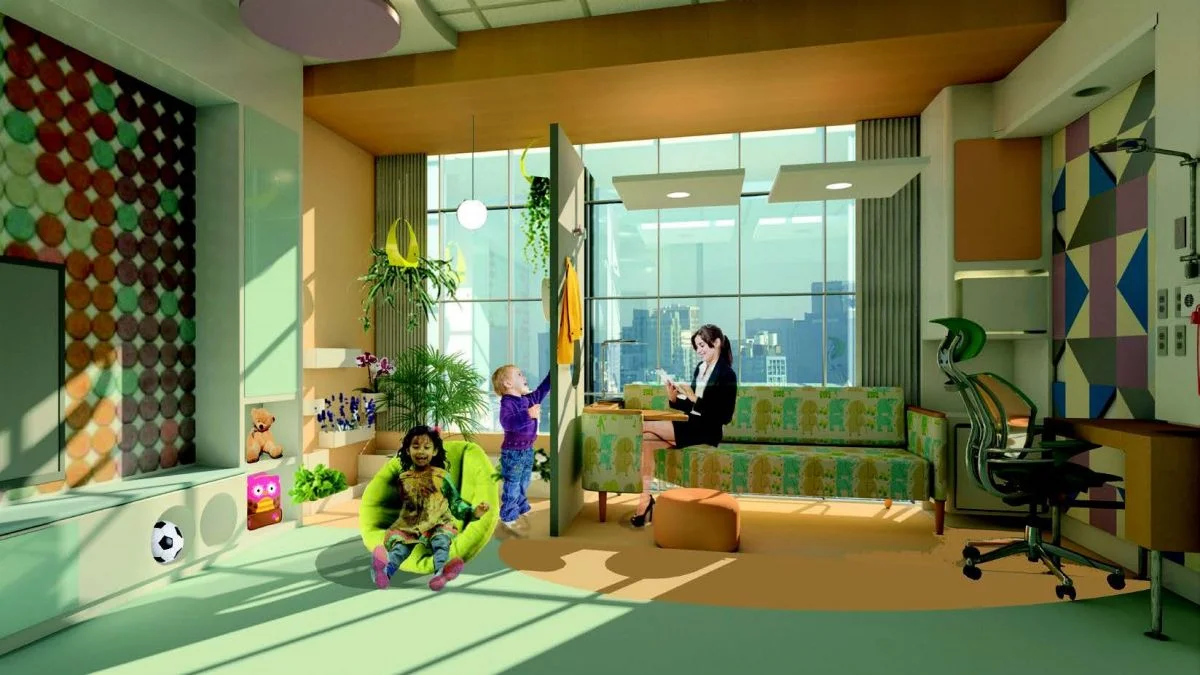H Contract, provider of upholstered seating and case goods furniture to the senior living, commercial and higher education markets, will celebrate its five-year anniversary at the upcoming Environments for Aging Expo and Conference in April.
Healthcare in 2018: The Consumer-Driven Patient
The current tech-inspired design process that favors a hackable environment (e.g. one that allows users to revise to suit daily needs), sensitive to new trends and fundamentally flexible, bodes well for healthcare and its changing needs.
Design Can Step in Where the American Health Care System Falls Short
At Metropolis's Washington D.C. Think Tank in December, hosted by Gensler, panelists—ranging from architects to a politician—discussed how to design for a healthier America.
Better Waiting Rooms Simply Can’t Wait
Steelcase Health researchers have found that positive waiting experiences and space design are linked with the perception of quality care, a key metric for today’s healthcare organizations.
Four Tips for Designing the Hospital of the Future
Sound Health: The Tranquility Room
It’s no wonder that healthcare workers are at high risk for physical and mental health problems, including musculoskeletal injuries and depression. Long overlooked, the impacts of diminished caregiver health are now coming to the surface.
Future Of Healthcare All About Patient Experience
With healthcare demand showing no signs of waning due to the aging population, cost pressures and technology breakthroughs, more medical facilities are hitting the market across the country, prompting new personnel to manage assets.
UB Medical School is designed for a new way of training doctors
With its terra cotta skin, dramatic seven-story atrium and more than 19,000 feet of glass, the new University at Buffalo Jacobs School of Medicine and Biomedical Sciences offers a sleek addition to the downtown cityscape.
Designing for the modern working mom
Updated best practices for designing lactation and wellness rooms mirror a larger national conversation about women in the workplace.
Health architecture firm serves up 7 predictions for design trends in 2018
From Emergency Departments to micro-hospitals, to the amenities in and locations of hospitals, the year ahead will see continued changes in how healthcare providers are designing and equipping their facilities to meet both patient and market needs
Redesigning the Exam Room for Mutual Participation
Americans make nearly one billion trips to the doctor every year, nearly three trips annually for every man, woman and child.
Design isn’t enough to foster collaboration in healthcare and research spaces
A new white paper published by Perkins Eastman examines why medical centers continue to be allegic to collaboration. The paper concludes that design that's not supported adequately by programming or orientation will be less effective.
PERKINS EASTMAN PUBLISHES NEW WHITE PAPER ON “THE EFFECTIVENESS OF COLLABORATIVE SPACES IN HEALTHCARE AND RESEARCH ENVIRONMENTS”
Creating child-friendly healthcare spaces: Five goals for success
Children often accompany parents or grandparents in medical settings; what can we do to address their unique needs?
FKP Joins CannonDesign
Merger strengthens CannonDesign’s pediatric healthcare expertise, establishes presence in Texas and Ohio
New Approaches to Planning Holistic Cancer Centers
The core of any cancer center is the treatment spaces, and this is where the Patient Advocate most specifically influenced design choices for the clinical spaces on the first floor.
Furniture breaks away from institutional design
Among the challenges to specifying furniture for hospital settings is the need to design highly durable, multifunctional furniture that works across a broad spectrum of users.
Creating a Place to Gain Human Ability
Shirley Ryan AbilityLab in Chicago. The project was designed as a collaboration between HDR and Gensler, in association with Clive Wilkinson Architects and EGG Office.
Healthcare Design Differentiates Practices In Consumer-Driven Marketplace
As patient convenience and satisfaction become a central focus in American healthcare, practices are seeking ways to provide a superior patient experience that retains customers and differentiates providers from competitors. The goal is to create a comfortable, relaxed environment that promotes healing and improved outcomes for patients, while supporting and energizing caregivers to perform at their best.
Food for Thought: Dining and Design in Healthcare
When you hear “hospital food” you likely have visions of wobbly blocks of jell-o, bland chicken breast and soggy green beans. You may also conjure up memories of sterile cafeterias with uncomfortable stack chairs. “Exceptional” is hardly the adjective you may use to describe the healthcare dining experience.

























